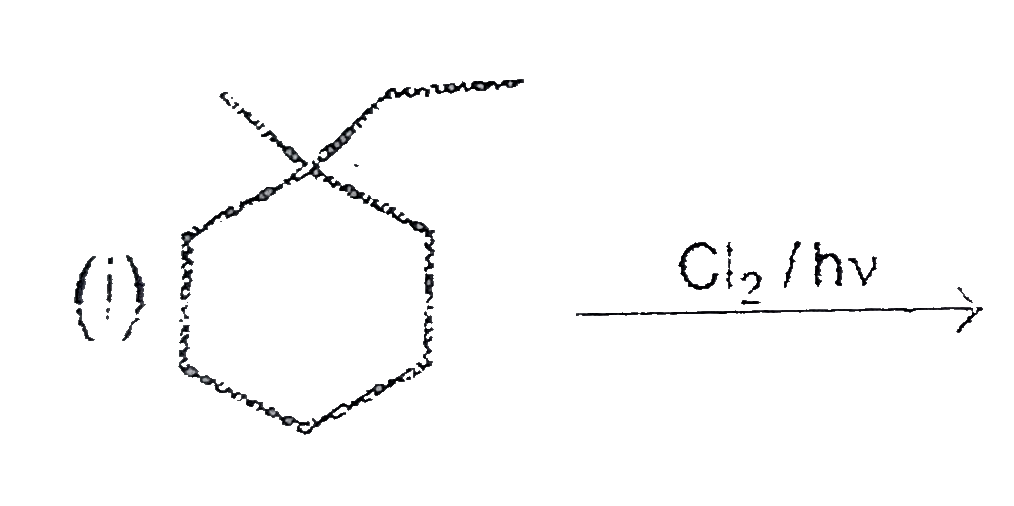Predict whether Tl⊕ will disproportionate in aqueous solution :
Tl3+1.25V−−→Tl⊕−0.34V−−−−→Tl.
Disproportionation of Tl⊕ can be represent as :
Tl⊕→Tl2⊕+TlEӨ=?….(i)
Given, 2eӨ+Tl3+→Tl⊕EӨ=+1.25V ….(ii)
eӨ+Tl⊕→TlEӨ=−0.34V …..(iii)
Eq. (iii) xx (ii) rArr 2Tl⊕+2eӨ→2TlEӨ=0.34V ...(iv)
Reverse Eq. (ii rArr Tl⊕→Tl3++2eӨEӨ=1.25V ...(v)
Add Eqs, (iv)+¯¯¯¯¯¯¯¯¯¯¯¯¯¯¯¯¯¯¯¯¯¯¯¯¯¯¯¯¯¯¯¯¯¯¯¯¯¯¯¯¯¯¯¯¯(v)⇒3Tl⊕→2Tl+Tl3+––––––––––––––––––––––––––––––+EӨ=−1.59V
Because EӨ value is highlye negative, Tl⊕ will have no tendency for disproportionation.
Topper's Solved these Questions
- P-BLOCK GROUP 13 - BORON FAMILYBOOK - CENGAGE CHEMISTRYCHAPTER - P-BLOCK GROUP 13 - BORON FAMILYEXERCISE - Solved Examples
16 Videos
- P-BLOCK GROUP 13 - BORON FAMILYBOOK - CENGAGE CHEMISTRYCHAPTER - P-BLOCK GROUP 13 - BORON FAMILYEXERCISE - Ex 6.1 (Subjective)
17 Videos
- ORGANIC REACTION MECHANISMBOOK - CENGAGE CHEMISTRYCHAPTER - ORGANIC REACTION MECHANISMEXERCISE - Analytical and Descriptive
6 Videos
- P-BLOCK GROUP 14 - CARBON FAMILYBOOK - CENGAGE CHEMISTRYCHAPTER - P-BLOCK GROUP 14 - CARBON FAMILYEXERCISE - Exercises Archives (Subjective)
9 Videos
Similar Questions
Predict whether Tit will disproportionate in aqueous solution, given the following standard reduction potential
E0TI/TI==0.34V, E0TI3/ETI−1.25V
View SolutionPredict the products with configurations in the following.
(a) (+)2−Octanol+PhSO2Cl→(A)Hot−−−→NaOH(B)
(b) (+)2−Octanol+CH3COCl→(C)Hot−−−→NaOH(D)
(c) CH3O∗H+PhSO2Cl→(E)Hot−−−→NaOH(F)+(G)
(d) CH3O∗H+CH3COCl→(H)Hot−−−→NaOH(I)+(J).
View Solution
Knowledge Check
Find out the compounds that will disproportionate in their aqueous solution.
(I)ClO−4overst(+0.36V)→ClO−3+0.33V−−−−→ClO2+0.66V−−−−→OCl−+0.40V−−−−→12Cl2+1.36−−−→Cl−
(II)MnO−4+0.56−−−→MnO2−4+2.22V−−−−→MnO2+0.95V−−−−→Mn3++1.55−−−→Mn2+(−0.19)V−−−−−−→MnA B
B C
C D
D
Using the following Latimer diagram for bromine,
pH=0,BrO−41.82V−−→BrO−31.50V−−→HBrO1.595V−−−→Br21.06552V−−−−→Br−
the species undergoing disproportionation isABrO−4BBrO−3CHBrODBr2Given the standard oxidation potentials
Fe+0.4V−−−→Fe2+(aq.)−0.8V−−−→Fe3+(aq.)
Fe+0.9V−−−→Fe(OH)20.6V−−→Fe(OH)3
It is easier to oxidise Fe^(2+) " to " Fe^(3+)inAacidic mediumBalkaline mediumCneutral mediumDboth in acidic and alkaline mediums
Number of monocloro structural isomers of :
(i) , Cl2/hv−−−→ " " (ii)
, Cl2/hv−−−→ " " (ii)  , Cl2/hv−−−→
, Cl2/hv−−−→
View SolutionWrite the disproportionation reactions of the following species :
(i) ClO− (ii) ClO−3 (iii) Cl− (iv) ClO−3
(v) ClO−4 (vi) Tl+
View SolutionExplain the effect of SN2 rates for the following reactions :
(a) Increasing the polarity of solvent.
(b) Show the T.S with all partial charges for each reaction type.
(I) Me2⊕S−Me+NH3→Me⊕NH3+Me2S
(II) MeI+NH3→Me⊕NH3+IӨ
(III) MeI+ӨOH→MeOH+IӨ
(IV) Me2S⊕−Me+ӨOH→MeOH+Me2S.
View SolutionIn the following reaction sequence in aqueous solution, the species X,Y and Z, respectively
S2O2−3Ag+−−→Xclear solutionAg+−−→Ywhite precipitatewithtime−−−−→Z black precipitate
View SolutionIn the following sequence of recation, identify the compounds (A), (B), (C ) and (D):
NSolutiona2CO3SO2−−→(A)Na2CO3−−−−→(B)S−−→Heat(C)AgNO3−−−→(D)
View Solution
